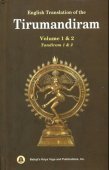Shaiva-siddhanta, Śaiva-siddhānta, Śaivasiddhānta, Shaivasiddhamta: 4 definitions
Introduction:
Shaiva-siddhanta means something in Hinduism, Sanskrit. If you want to know the exact meaning, history, etymology or English translation of this term then check out the descriptions on this page. Add your comment or reference to a book if you want to contribute to this summary article.
The Sanskrit terms Śaiva-siddhānta and Śaivasiddhānta can be transliterated into English as Saiva-siddhanta or Shaiva-siddhanta or Saivasiddhanta or Shaivasiddhanta, using the IAST transliteration scheme (?).
In Hinduism
Shaivism (Shaiva philosophy)
Source: McGill: The architectural theory of the Mānasāra (shaivism)Śaivasiddhānta (शैवसिद्धान्त) was the philosophical-theological systematization of Śaiva revelation received through these two streams (bhakti and āgamas), and was indelibly linked to the public institution of the temple.
Śaiva Siddhānta propounds three fundamental categories that correspond to divinity, humanity and the world, namely
- pati, Deity, i.e., Śiva (literally, “master”);
- paśu, Self (literai1y, “beast”);
- pāśa, Bond (literaily, “rope”) – the world of matter, of “flesh”, that enslaves paśu.
This basic triad is further developed along emanationist lines into principles, thirty-six in number, that follow a hierarchical pattern from subtle ta gross. These principles elucidate the nature of Śiva in his modes of being and becoming, and explain the evolution of the self and of the world from Siva and their involution into Śiva at the end of the eon. The same principles also encompass the entire scope of existential and experiential aspects of the self white being in the world.
Source: Shodhganga: Iconographical representations of ŚivaŚaivasiddhānta (शैवसिद्धान्त).—The system of Śaivasiddhānta, holds the idea that Śiva is capable of taking the souls in to the stage of liberation. This can be proved from the evidence available in Jñānapāda of Mṛgendrāgama.—“Śiva who is devoid of Mala and who is capable of performing all actions, and who knows all the perspectives, is clearing off the Pāśajāla of Anu (souls) which is different from him” (paramokṣanirāsa-prakaraṇa verse 1).

Shaiva (शैव, śaiva) or Shaivism (śaivism) represents a tradition of Hinduism worshiping Shiva as the supreme being. Closely related to Shaktism, Shaiva literature includes a range of scriptures, including Tantras, while the root of this tradition may be traced back to the ancient Vedas.
Languages of India and abroad
Sanskrit dictionary
Source: Cologne Digital Sanskrit Dictionaries: Aufrecht Catalogus CatalogorumŚaivasiddhānta (शैवसिद्धान्त) as mentioned in Aufrecht’s Catalogus Catalogorum:—Io. 777.
Sanskrit, also spelled संस्कृतम् (saṃskṛtam), is an ancient language of India commonly seen as the grandmother of the Indo-European language family (even English!). Closely allied with Prakrit and Pali, Sanskrit is more exhaustive in both grammar and terms and has the most extensive collection of literature in the world, greatly surpassing its sister-languages Greek and Latin.
Kannada-English dictionary
Source: Alar: Kannada-English corpusŚaivasiddhāṃta (ಶೈವಸಿದ್ಧಾಂತ):—[noun] a Śaiva school of thought, the philosophy of which is based on the vedas, upanishads, and Śaivāgamas, that see Śiva as the Supreme Reality.
Kannada is a Dravidian language (as opposed to the Indo-European language family) mainly spoken in the southwestern region of India.
See also (Relevant definitions)
Partial matches: Shaiva, Siddhanta.
Ends with: Virashaivasiddhanta.
Full-text (+287): Shivaprakasha, Bakesha, Bhujangesha, Ardhanarisha, Anantesha, Trimurtisha, Shveta, Mahakalishvara, Lohiteshvara, Ajesha, Someshvara, Samvartakesha, Mahasena, Krodesha, Sukshmesha, Bharabhuteshvara, Sthanvisha, Bhautikesha, Sadyojatesha, Anugraheshvara.
Relevant text
Search found 18 books and stories containing Shaiva-siddhanta, Śaiva-siddhānta, Shaivasiddhanta, Saiva-siddhanta, Śaivasiddhānta, Saivasiddhanta, Shaivasiddhamta, Śaivasiddhāṃta, Saivasiddhamta; (plurals include: siddhantas, siddhāntas, Shaivasiddhantas, Śaivasiddhāntas, Saivasiddhantas, Shaivasiddhamtas, Śaivasiddhāṃtas, Saivasiddhamtas). You can also click to the full overview containing English textual excerpts. Below are direct links for the most relevant articles:
Sivaprakasam (Study in Bondage and Liberation) (by N. Veerappan)
Earlier Research Works < [Chapter 1 - Introduction]
Basis of advaita < [Chapter 5 - Concept of Advatia]
Author (Umapati Shivam) and his Works < [Chapter 1 - Introduction]
A History of Indian Philosophy Volume 5 (by Surendranath Dasgupta)
Part 3 - Māṇikka-vāchakar and Śaiva Siddhānta < [Chapter XXXVIII - Śaiva Philosophy in some of the Important texts]
Part 4 - Mataṅga-parameśvara-tantra < [Chapter XXXIV - Literature of Southern Śaivism]
Part 1 - The Literature and History of Southern Śaivism < [Chapter XXXIV - Literature of Southern Śaivism]
Hindu Pluralism (by Elaine M. Fisher)
Śrīvidyā and society in Nīlakaṇṭha Dīkṣita’s Saubhāgyacandrātapa < [Chapter 2 - The Making of the Smārta-Śaiva Community of South India]
Śaivism and Brahminical Orthodoxy < [Chapter 1 - Hindu Sectarianism: Difference in Unity]
The sites of Multilingual Literary production in Nāyaka-period South India < [Chapter 4 - The Language Games of Śiva]
Expiatory Rites in Keralite Tantra (by T. S. Syamkumar)
1.8 (a). Expiatory Rites in other Saiva Treatises < [Chapter 2 - Expiatory Rites in Āgamic Literature]
Introduction (Expiatory Rites in Āgamic Literature) < [Chapter 2 - Expiatory Rites in Āgamic Literature]
1.3. Expiatory Rites in Sārdhatriśatikālottara-āgama < [Chapter 2 - Expiatory Rites in Āgamic Literature]
Shaiva Upanishads (A Critical Study) (by Arpita Chakraborty)
13. Forms are for Visualization < [Chapter 5 - Essence of Pañcabrahma Upaniṣad]
5. Form of Worship of Śiva < [Chapter 1 - Introduction]
6. Theistic Philosophy < [Chapter 1 - Introduction]
Reviews < [September 1938]
Ananda Coomaraswamy and the Tamil < [July – September, 1980]
Subramania Bharati's Prose-Poetry < [January – March, 1982]
Related products

